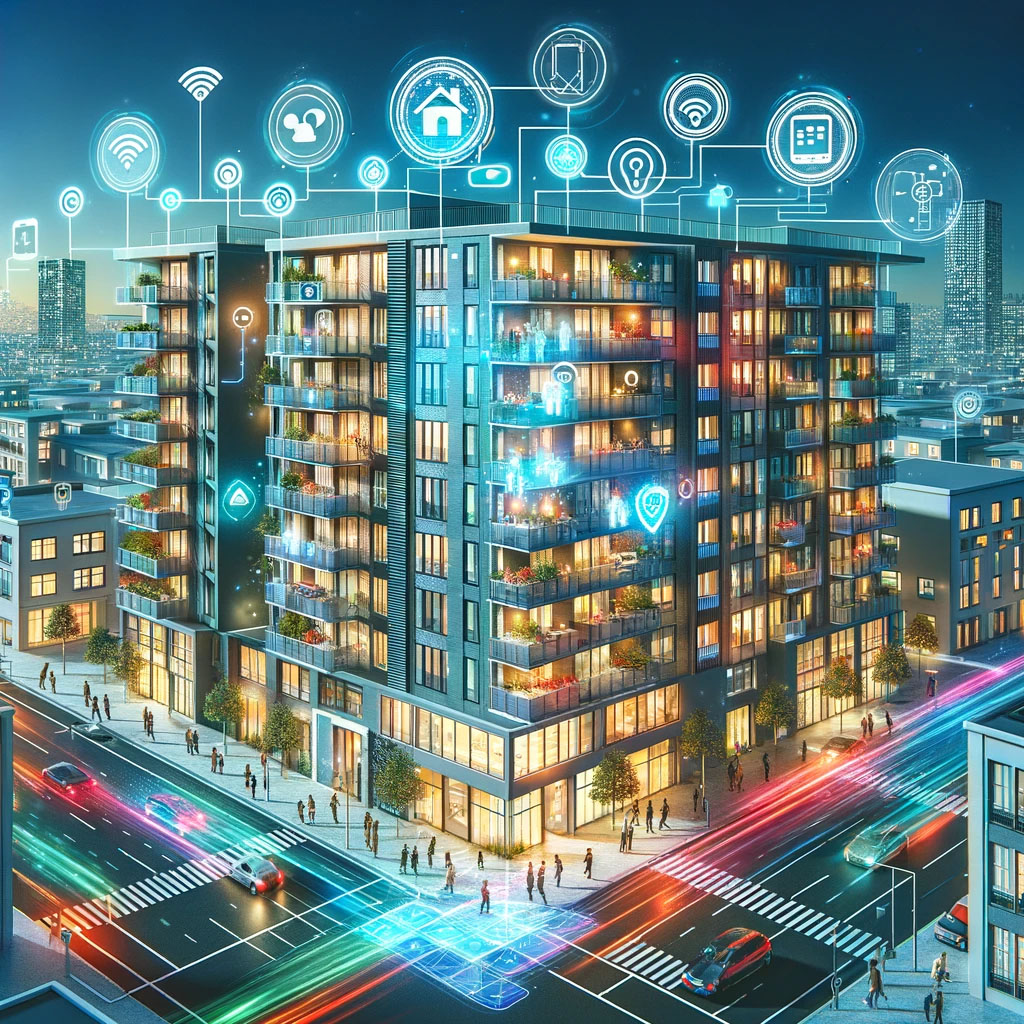In the era of rapid technological advancement, internet access is more advanced and autonomous than ever. The Internet of Things, or IoT, has emerged as a transformative force that revolutionizes various aspects of our daily lives.
One area where IoT is making significant strides is in multi-dwelling unit living, like in offices or apartment buildings. These modern smart homes and buildings leverage IoT technology to enhance convenience, efficiency, and sustainability. The role of IoT in enhancing MDU living is unlimited when it comes to smart homes and their respective communities. Here is everything you need to know about the background and advancements of IoT in the context of internet connectivity and MDUs.
Understanding IoT and Its Role in MDU Living
So, what does the Internet of Things mean? At its core, IoT refers to the network of interconnected devices embedded with sensors, software, and connectivity capabilities that enable them to collect and exchange data. These devices can range from everyday objects like thermostats and light bulbs to more complex systems like home security cameras and smart appliances.
At MDU apartment buildings, IoT technology transforms traditional residences into smart homes and communities by integrating various devices and systems to create connected and intelligent living spaces. Through sensors, actuators (a machine component responsible for movement), and network connectivity, IoT enables residents to remotely monitor and control various aspects of their homes, including lighting, thermostats, security, and energy usage.
Critical Components of Smart Homes
You might be hearing a lot about Smart Homes these days, but what exactly constitutes one? A Smart Home is essentially a living space that’s introduced automation or remote monitoring to increase efficiency and comfortability. Here are some of the critical components of these advanced dwelling spaces and what you can expect from these technologies.
Smart Homes are equipped with a variety of IoT-enabled devices that offer enhanced mobility and connectivity. These devices include smart thermostats, lighting systems, self-locking devices, and appliances. All of these technologies can be controlled remotely through smartphone apps, tablets, or voice commands.
Central to the concept of Smart Homes is the integration of home automation systems that conduct the operation of various smart devices and systems. Like a connected web, these systems use algorithms and artificial intelligence to automate cleaning tasks, optimize energy usage, and enhance convenience for residents. Home automation systems can include turning off lights, setting alarms, and setting thermostat changes via WiFi both in and outside the house.
In smart communities, IoT extends beyond individual homes or apartments to encompass connected infrastructure and amenities shared by residents. A community situation that utilizes IoT could include smart parking systems, waste management solutions, timed street lights, and other services designed to improve efficiency and quality of life.
One of the essential parts of IoT is its ability to use data analytics in real-time to continuously evolve and change its outputs. IoT generates vast amounts of data from connected devices and sensors, providing valuable insights into residents’ behavior, preferences, and usage patterns. Property managers and community developers can optimize resource allocation, improve operational efficiency, and tailor services to meet residents’ needs by analyzing this data.
IoT and Internet Connectivity
A foundational aspect of IoT is its reliance on internet connectivity to enable communication and data exchange between connected devices and systems. In the context of MDU living, high-speed and reliable internet is essential to support the seamless operation of smart homes and their connected, automated devices.
IoT devices require high-speed internet access to transmit data efficiently and respond to commands efficiently. Residents rely on broadband internet connections to interact with smart devices, access online services, and leverage cloud-based applications that power smart home functionalities. Seamless, uninterrupted WiFi is essential to maintaining a Smart Home’s data analysis and operations like adjusting thermostats, locking doors, and energy-efficient light usage.
The deployment of IoT in MDU living needs network infrastructure that’s capable of supporting the growing demand for bandwidth and connectivity. Property owners and managers must invest in resilient and high-grade network solutions, including fiber optic cables, Wi-Fi infrastructure, and cellular connectivity. Upgrading an internet package or installing optimum cables for MDUs helps accommodate the progression of connected devices and ensures a seamless experience for residents.
As IoT devices expand and increase, concerns regarding cybersecurity and data privacy have become paramount. In the context of MDU living, ensuring the security of IoT devices and networks is essential to protect residents’ personal information and safeguard against potential cyber threats. Property managers and IoT providers must implement robust security measures, such as encrypted data, two-step verification, and access controls to mitigate security risks and ensure the integrity of Smart Home systems.
As IoT becomes increasingly prevalent in MDU living, it’s essential to address issues of digital inclusion and equitable access to technology. Property developers and community planners must consider the diverse needs of residents and ensure that all members of the community have access to reliable internet connectivity and the benefits of IoT-enabled services. Especially in apartment living or office building settings, managers or property owners have a new responsibility to provide premium infrastructure that will support modern connectivity needs.
The integration of IoT technology in MDU living is transforming traditional residences into Smart homes and communities that offer enhanced convenience, efficiency, and energy conservation. Through the use of connected devices, home automation systems, and data analytics, IoT enables residents to enjoy a seamless living experience characterized by greater control, comfort, and connectivity.
However, the successful implementation of IoT in MDU living relies heavily on high-speed and reliable internet connectivity that’ll support the operation of smart devices and automated systems. Property developers, managers, and community planners must prioritize investment in network infrastructure like fiber-optic cables and broadband connection as well as cybersecurity measures. Financing tools to support large-scale internet connectivity ensures that all residents can benefit from the opportunities presented by IoT-enabled living spaces.
